50 Best Articles on Facility Management
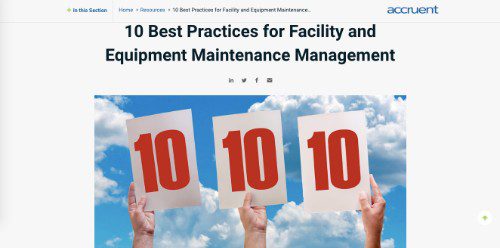

Facility management is a position that requires a unique set of duties that are unmatched in many ways. For instance, facility managers hold one of the only positions in large organizations that require communication with virtually all corporate levels, from C-suite executives to temporary contractors.
In this way, it’s a thrilling and powerful position, but it’s also one that requires an immense amount of responsibility, from the overseeing of basic building maintenance to sophisticated software deployments. These tasks are often managed with the aid of comprehensive facility management software, but the role is still a complex and multi-faceted one requiring a highly competent professional to manage the many aspects of running a facility.
Because the wonderful world of facility management changes and evolves with today’s technology, it’s important for even the most seasoned facility managers to keep abreast of the latest trends. That’s why facility managers often attend facility management conferences, and even the most seasoned professionals find value in continuing education.
Facility managers also find value in reading about the latest trends and expert insights published in industry publications and blogs. To support this, we’ve done the homework for you by compiling a list of the 50 most current and most insightful articles on facility management available.
Each and every one contains valuable information on the emerging trends and best practices of the sturdiest operations around. We’ve organized this list alphabetically, and by category.
1. 10 Best Practices for Facility and Equipment Maintenance Management
@accruentllc

Software firm, Accruent, publishes a blog that’s chock-full of industry insider tips on all things facilities management, whether it be in healthcare, field service management, maintenance management, space planning, and beyond. In this article, the company takes a laconic approach to laying out the ‘holy grail’ best practices for modern facility managers, including troubleshooting, 3PL management, and granular data assessment.
Key Takeaways:
2. Facility Management Best Practices
@bldgcontrols
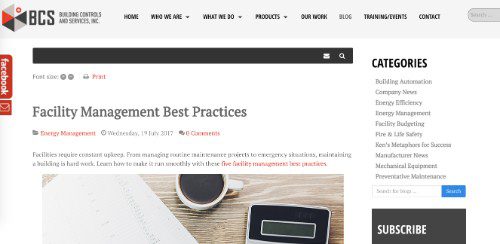
Building Controls and Services, Inc. is a company that has made it its mission to provide building automation services to a wide range of businesses. In this article, BCS shares its top 5 most important traits for facility managers, from the technical, like benchmark creation, to the personnel-related, like proper communication practices.
Key Takeaways:
3. Looking Ahead to Winter Facility Management
@buildingsmedia
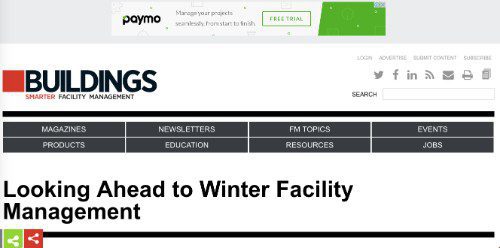
One of the toughest – and most overlooked – problems that many facility managers face is the issue of winter weather and how it can affect the integrity of the building. In this article, published by Buildings, we get a sneak peek into the most helpful topics discussed in the BIFM-published, winter Good Practices Guide.
Key Takeaways:
4. Key Attributes for Becoming Best-in-Class in Facilities Management
@BuiltSpace
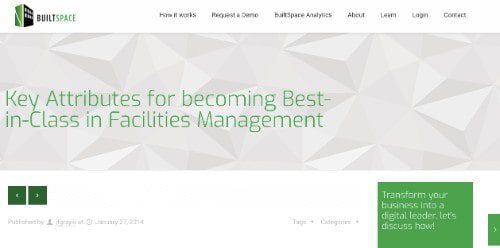
Becoming a ‘best-in-class’ facilities manager takes a lot of experience, commitment, and trial and error. Luckily, the writers of the Built Space Blog have created a comprehensive list detailing the key attributes that all managers shooting for the stars should achieve on their journeys. In it, we get an understanding of how well-planned processes, technology, and organization can transform a good operation into a great one.
Key Takeaways:
5. 50 Expert Facilities Management Tips and Best Practices
@camcode
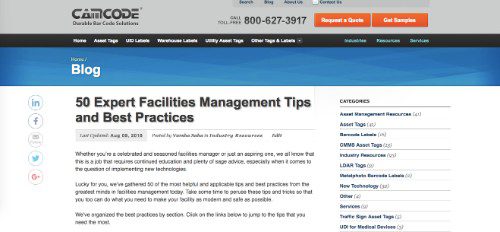
At Camcode, we’ve published plenty of material that is meant to enrich and inform the experiences of facility managers working at all levels. Our article, 50 Expert Facilities Management Tips and Best Practices, provides readers with the best, most extensive advice, from the leading names in FM. For the most personalized help, search through the article by category.
Key Takeaways:
6. Question of the Week: What Best Practice Boosts Your Bottom Line?
@facilityexec
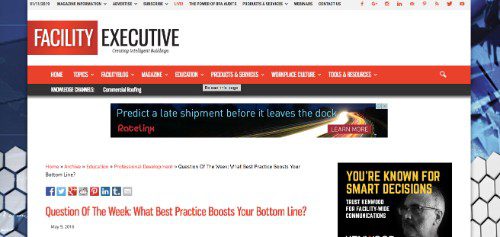
Industry paper, Facility Magazine, provides a helpful Q&A column for those grappling with the most technical of FM issues. In this installment, Sharon Prezzy, deputy PMO lead at Springfield, VA-based Strategy and Management Services, Inc. (SAMS), and Reginal McCotter, chief engineer/project manager with SAMS, answer this question: “Whether broad or specific, what is a best practice you have positioned front and center for your department?”
Key Takeaways:
7. 7 Steps to Successful Facilities Management
@fasttac
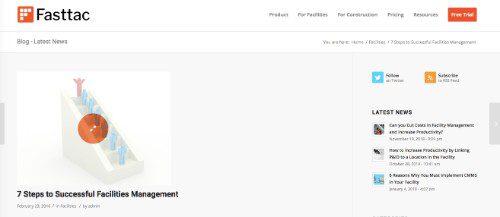
Facility and Construction app, Fasttac, provides users and visitors of its blog with plenty of helpful information on facility management logistics, particularly related to safety and regulation standards compliance. In this article, the company delves into their 7 must-follow steps, all of which can be applied to facilities of all sizes and industries.
Key Takeaways:
8. Introducing the Best Practices for Space Management
@fm_systems
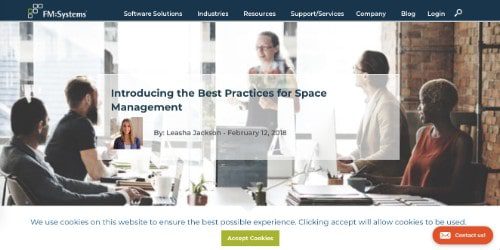
FM Systems, the facility management-savvy software firm, has published a series of articles, white papers, and webinars geared towards the modern facility manager. In a post written by Leasha Jackson, readers get a peek into the comings and goings of the company as well as its best practices for the space management sphere.
Key Features:
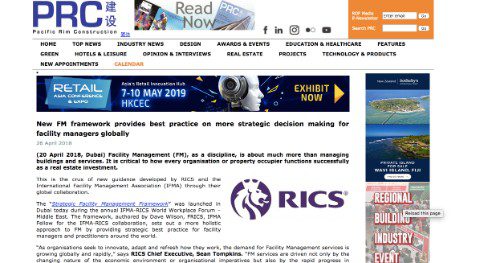
Pacific Rim Construction magazine, otherwise known as PRC, frequently provides valuable information to facility managers working in the internationally, specifically in the Pacific Rim region. In this article, RICS Chief Executive, Sean Thompkins, gives his insight on IFMA’s “Strategic Facility Management Framework,” a series of new guidelines that launched in Dubai in 2018.
Key Takeaways:
10. What Are Today’s Best Practices in Facilities Management?
@qsifacilities
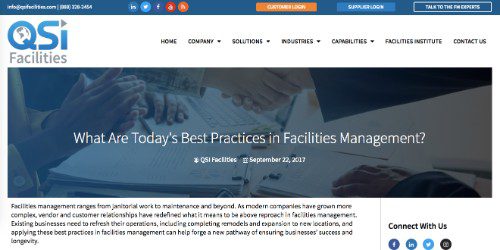
QSI Facilities, a technology and field partner leader working in the FM spectrum, frequently publishes straightforward assessments of modern facilities management practices to its blog. In this post, QSI Facilities focuses on the way that the newest, most cutting-edge technologies are helping to shape and inform the field, whether it be through software implementations or low-tech process overhauls.
Key Takeaways:
11. 4 Common FM Mistakes and How to Avoid Them
@ServiceChannel
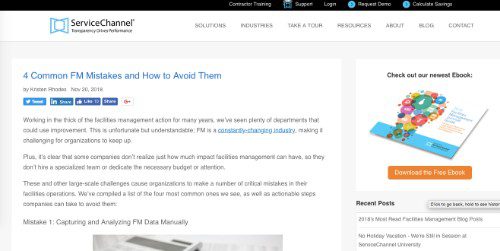
Sometimes the most hard-hitting best practice lists feature examples of the most perilous mistakes. In this Service Channel post, Kristen Rhodes details the 4 most common flubs often seen in the field of facility management. Luckily, each of these mistakes is easy to spot once you take the time to become acquainted with the ways in which so many fall into the traps.
Key Takeaways:
12. The Complete Guide to Facilities Management Career Paths and Advancement
@smartsheet
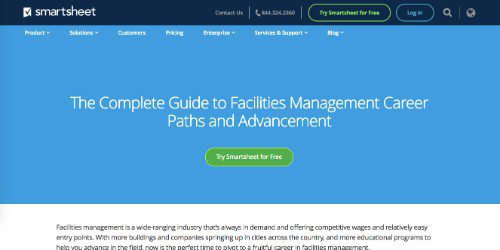
Smartsheet, a software company the provides solutions to a wide range of industries, including facility management, has published a comprehensive guide geared towards budding facility managers as well as established facility managers who have their sights set on moving up. This guide covers an array of topics, from day-to-day operational basics to salary information.
Key Takeaways:
13. Cost-Cutting Tips for Facility Management
@solid_care
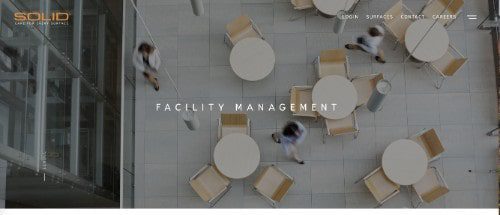
Solid, a firm that specializes in hard surface care has published a series of helpful cost-cutting tips for facility managers. This hard-hitting advice implores the reader to take an extra close look at their assets, challenging them to invest in the upkeep of the ones that provide the best overall value to the business.
Key Takeaways:
14. New Best Practices in Facilities Management
@TradelineInc
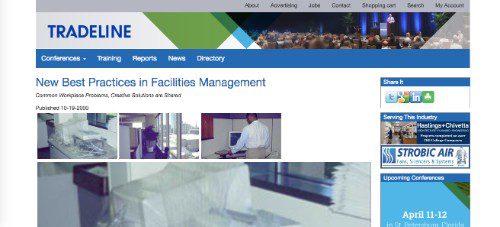
In an article for Tradeline, author Lawrence A. Howard, takes a deep dive into the updated best practices for use in the FM sphere, most specifically, advice on corporate workplace building management. Added insight is provided by Keith McClanahan, principal and founder of the publishing and benchmarking organization Facility Issues.
Key Takeaways:
15. 3 Facility Management Technology Trends to Look Out For
@Akitabox
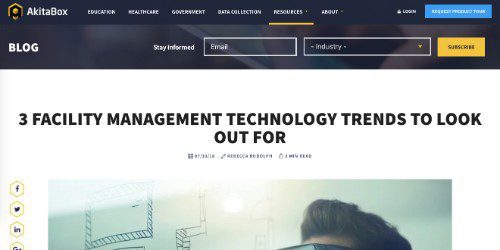
Don’t invest in technology that will soon become obsolete; instead, implement the kinds that will support your operation well into the future. In an article for AkitaBox, Rebecca Rudolph gives readers a brief, yet very thorough view of the FM technological trends that are making long-lasting impacts, including asset maintenance systems, mobile capabilities, and more.
Key Takeaways:
16. What is IoT? How Smart Building Technology is Changing Facilities Management
@BuildingsMedia
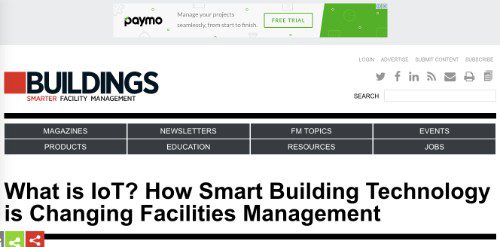
In a detailed article for Buildings, Janelle Perry takes a deep dive into the oft-misunderstood subject of IoT and how it is changing the practice of modern-day facilities management. In the piece, Perry quotes multiple business owners and facilities managers to get their takes on how this high-tech system should be implemented and managed.
Key Takeaways:
17. Key Technology Trends Driving Facilities Management Industry
@BWBusinessWorld
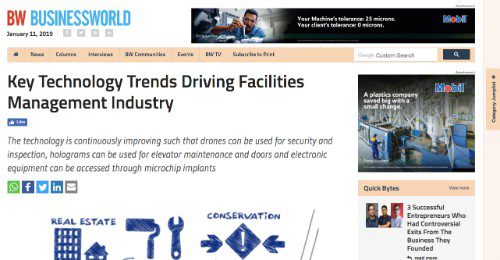
Aval Sethi, Chief Executive of Protaiga, has written an article for Business World India in which he explores the many ways new technologies have transformed the FM business. Though he acknowledges that trends in the field are already “smart,” Sethi chooses to focus on future high-tech trends that he predicts will bring even more advances, such as robotics, AI, and augmented reality.
Key Takeaways:
18. Disruptive Information Technology Trends Affecting the Facility Management Service Provider Industry
@FMIexpo
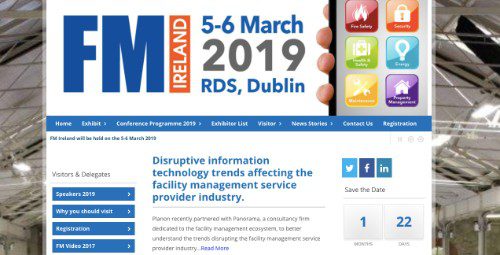
Planon, a software company that provides helpful solutions and services to the FM industry, partnered with consultancy firm, Panorama, to conduct a widespread series of interviews with FM leaders. By doing this, the company learned much about the changing face of FM technology, and how it is being used to streamline the entire field. It then wrote a report, which is available to view on Planon’s website. Note: You must request a free copy of this article via Planon’s online submission form.
Key Takeaways:
19. Spotting the Next Trends in Facilities Management
@gulf_news
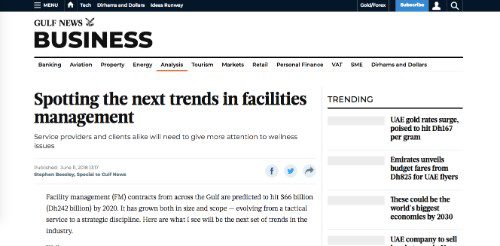
This past summer, Gulf News published an article in its Business section, detailing trend-spotting in FM. Writer Stephen Beesely explores the many ways in which the UAE has been a hotbed for the support of emerging technologies, particularly in terms of robotics and wearable technology. He also predicts how this support will help shape the future of FM tech.
Key Takeaways:
20. Facilities Management: 5 Technologies Changing the Way You Work
@infor
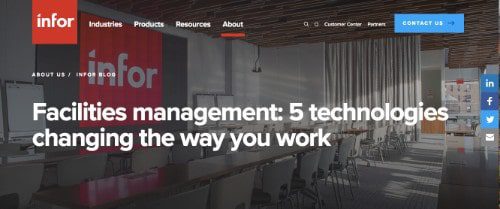
Cloud-based software provider, Infor, regularly posts guides and articles to its blog that center around the issues of the modern-day facilities manager. In this article, Mike Stone, CRMP and Infor EAM Product Manager, explores the many ways in which software and other emerging technologies can streamline – or even re-invent – your facility’s processes.
Key Takeaways:
21. 4 Technologies Impacting Modern Facilities Management
@iOfficeCorp
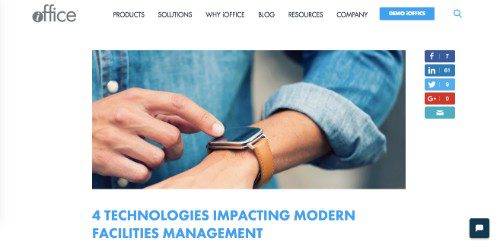
Facility operations leader, iOffice, published a post revealing four of the top technologies impacting facilities management today. In the piece, author James McDonald explores how high-tech systems and accessories, like BIM, machine learning and AI, smart building, and wearable technology are time and money-saving solutions that all facilities should assess.
Key Takeaways:
22. Role of Technology in Facilities Management
@pcquest
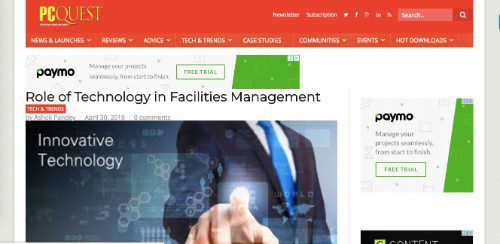
In a piece written for PCQuest, Deepak Uppal, Executive Director at Enviro, tackles the broad topic of technology’s role in the facility management spectrum. Uppal uses the platform to praise the latest FM-driven information technology and educates readers on how to best select and implement such options.
Key Takeaways:
23. 10 Ways Sofware Can Help with Facilities Management
@selecthub
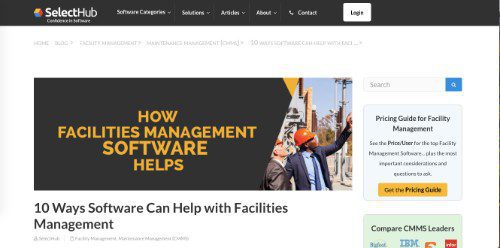
Those who are just sticking their toes into the idea of FM-based software implementations will find this SelectHub-penned article to be particularly helpful. In it, we learn that software investments aren’t just a passing fad, facilities managers in a wide range of industries are reaping the benefits and experiencing ultra-fast returns.
Key Takeaways:
24. 14 Innovation and Trends Impacting Facilities Management
@ServiceChannel
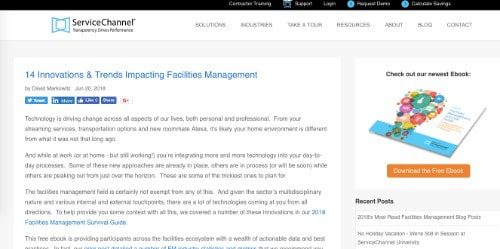
In a post for ServiceChannel, David Markowitz quotes a long list of industry experts after asking them to reveal their thoughts on the most lasting innovations and trends currently impacting facilities management. Though the responses run the gamut in terms of content, the reader is left with a very clear view of what tools the top FM executives value most.
Key Takeaways:
25. 5 Tech Features Facilities Managers Can’t Live Without
@teemforwork
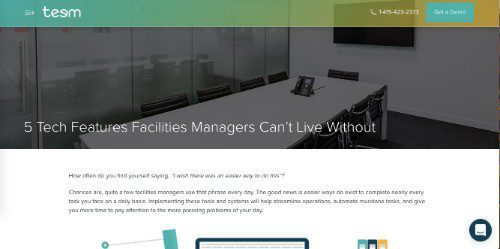
Space scheduling solution app Teem, recently published an article to its blog which explores the newest and classic tech features that top facility managers can’t get enough of. The piece covers everything from the most reliable and budget-friendly workflow systems to the ever-evolving world of automated building entry, all in a digestible format that even the busiest of facilities managers can benefit from.
Key Takeaways:
26. Realizing Value from Investments in FM Technology: 2018 Facility Management Benchmark Survey
@VeoliaUK
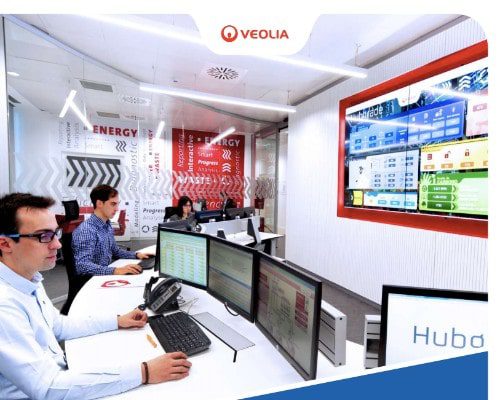
French utility service provider, Veolia, has published its comprehensive Facility Management Benchmark Survey for 2018, a document that reveals hard-hitting facts about the most viable tech options used in FM today. In it, facilities managers get an in-depth look at how both “new and mature” technologies can be best implemented for a more maximized ROI.
Key Takeaways:
27. 10 Tips for Green Building Certification
@BuildingsMedia
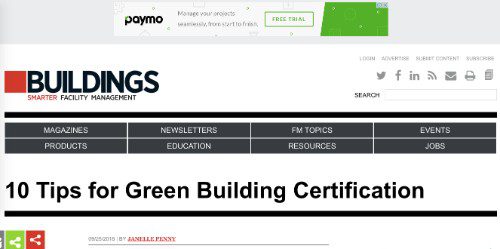
In an article written for Buildings, senior writer Janelle Penny provides facility managers with the top 10 ways they can most effectively receive a green building certification. Penny uses examples of businesses who have already managed to pull this off on large scales as a way to take hopeful managers through this often-laborious process.
Key Takeaways:
28. 8 Recycling Tips for Facility Managers
@CleanRiverPR
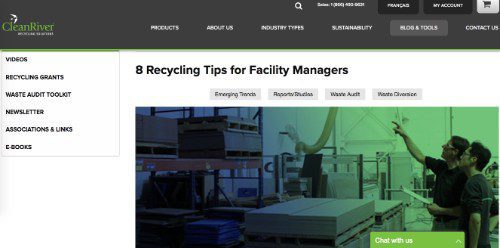
CleanRiver, a recycling solution firm, has published its must-follow recycling tips for all facility managers. Considering the source, each and every tip holds high value, from the common-sense suggestions, like including high-impact signage, to the more involved, like waste hauler scheduling.
Key Takeaways:
29. Facility Managers and Sustainability: Challenges, Best Practices, and Trends
@engieinsight
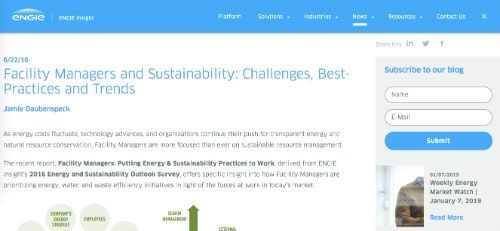
ENGIE Insight, an efficiency management solution provides products that help facilities attain greener statuses. In this piece, writer Jamie Daubenspeck explores the challenges associated with sustainability that so many facility managers face, while still focusing in on the built-in areas that they can leverage to their advantage.
Key Takeaways:
30. Efficient, Sustainable, and Effective Facilities Management
@EngNewsZA
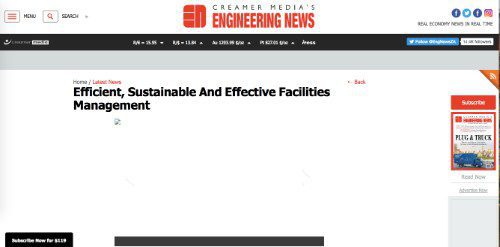
In a recent article published in Engineering News, the publication explores the ways in which today’s facilities are using sustainability initiatives to promote more effective management and operational practices. The piece also makes mention of the dreaded ‘sick building syndrome,’ a paramount FM failure that can put employees at risk.
Key Takeaways:
31. Six Tips for a Green Cleaning Program
@facilityexec
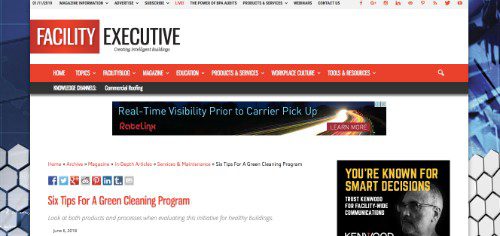
Armando Lezama, senior director of operations for facility services company UG2, reveals his best green cleaning program tips in an article for Facility Executive. In it, Lezama touches on a variety of actionable topics, such as product selection, training initiatives, compliance, and much more.
Key Takeaways:
32. Post-Disaster Energy Conservation Tips
@FMDAdvisor
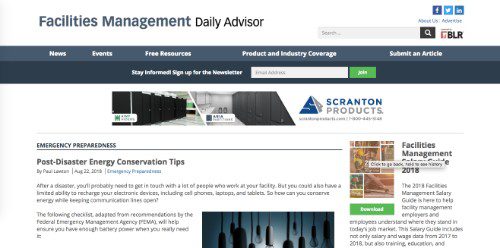
Facilities Management Daily Advisor regularly publishes tips for those working in FM to follow, but one of its more important pieces details the ways in which energy conservation can be compromised post-disaster. This can be one of the most trying and dangerous times for a facility and its surrounding community, so the more preparation that is put into the area, the better.
Key Takeaways:
33. Tips for Small Manufacturers Looking to Go Green
@FMDAdvisor
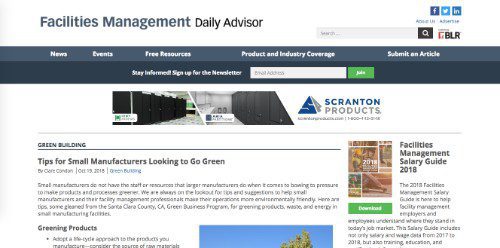
Another piece published in Facilities Management Daily Advisor, written by Claire Condon, reveals a set of important green-related tips geared towards small manufacturers. Topics explored in the piece include: greening products, greening wastes, and greening energy.
Key Takeaways:
34. 9 Steps to Creating a Culture of Sustainability
@maintenance_mag
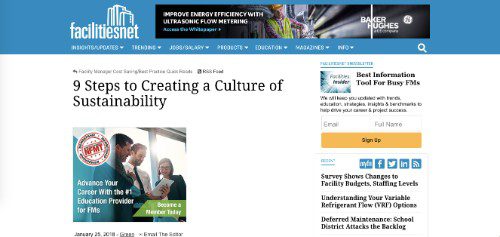
In an article written for FacilitiesNet, writer Stephen Ashkin, details the many steps that facility managers must take in order to attain more sustainable company cultures. Ashkin explores a variety of methods that this can be achieved, including honoring staff suggestions and promoting accountability throughout the organization.
Key Takeaways:
35. 14 Tips for Success in Green Building
@maintenance_mag
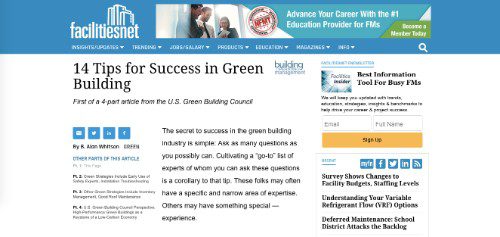
For facility managers fortunate enough to be involved in the building of their facilities, FacilitiesNet has published a list of 14 tips that outline that ways in which green initiatives can start long before the construction begins.
Key Takeaways:
36. Sustainability Drives Facility’s Future
@maintenance_mag
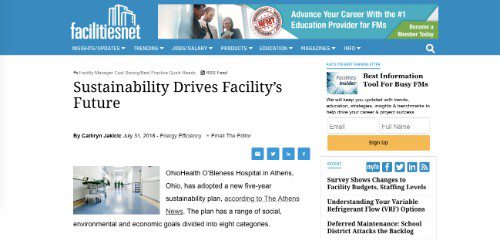
FacilitiesNet published yet another insightful article on sustainability in FM, this one penned by healthcare industries expert, Cathryn Jakicic. This quick read delivers a surprising punch, detailing the many trends that are shaping the future of sustainable facilities management at OhioHealth O’Bleness Hospital in Athens, Ohio.
Key Takeaways:
37. 4 Steps to Improve Your Facility’s Energy Efficiency
@softwareadvice
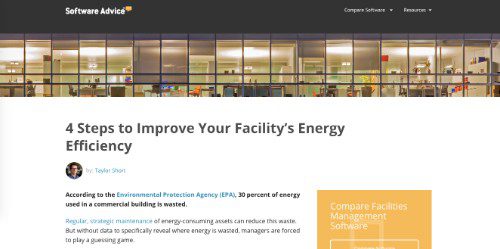
In this piece written for Software Advice, author Taylor Short explores the way in which comprehensive energy auditing can help form, and ultimately dictate, sustainability plans. This can be done through a series of submetering and consumption data analysis, as well as smart benchmarking.
Key Takeaways:
38. Improve Your Food Plant’s Sustainability with These 5 Tips
@stellargroup
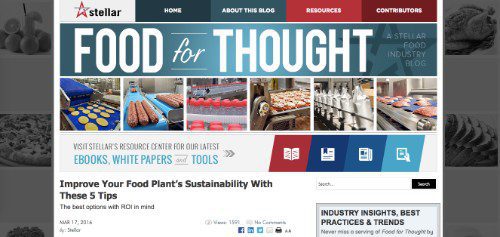
Those managing a food manufacturing facility will get helpful info from this piece published in Stellar Energy’s Food for Thought blog. In it, we are awarded great tips for promoting sustainability, including guidance on insulation, processing lighting, and water conservation.
Key Takeaways:
39. Optimize Operational and Maintenance Practices
@wholebldgdesign
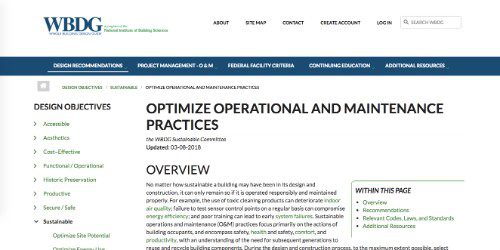
The Whole Building Design Guide, which is a program of the National Institute of Building Sciences, includes an article which focuses on the streamlining of operational and maintenance practices for facility managers. In it, readers are provided with guidelines on how to best launch sustainability-driven training programs, as well as the implementation of waste programs.
Key Takeaways:
40. A Building Security Checklist for Crime Prevention
@thebalance
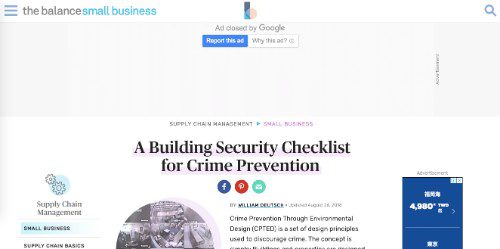
In an article for The Balance Small Business, William Deutsch reveals his building security checklist, a set of rules that have been updated to meet the technological needs of today’s facility managers. Although each list should be customized to fit the needs of each unique operation, this one is a great place to start.
Key Takeaways:
41. 4 Security Best Practices
@BuildingsMedia
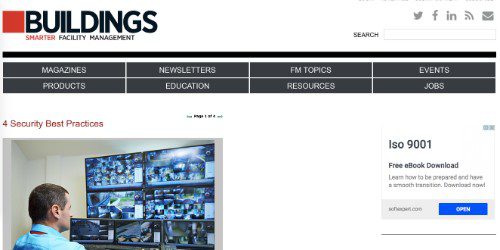
Facility management publication, Buildings, created a slideshow-based article that covers the four main areas that all working in the field of FM should follow. Included in the post is a range of helpful advice, from adopting the latest technology to building a proactive security culture.
Key Takeaways:
42. Tips for Facility Security Planning and Training
@TRPCorp
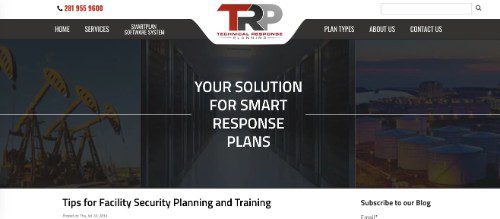
Technical Response Planning, or TRP, is a firm that specializes in the field of response planning and software implementation for a variety of industries. In this piece, TRP takes a deep dive into the ways in which all different sizes of operations can develop their own customized facility security plans.
Key Takeaways:
43. Study: Ten Things that Any Emergency Preparedness/Business Continuity Plan Should Include
@IFMA
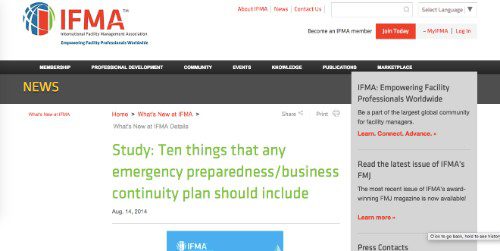
The authority on all things facility management, the IFMA, released an article that profiles its sweeping study of emergency preparedness and business continuity planning. This piece provides a breakdown of the statistics gathered and includes information on how facilities can right their wrongs moving forward.
Key Takeaways:
44. Facility Managers and Their Role in an On-Site Emergency
@IFMALongIsland
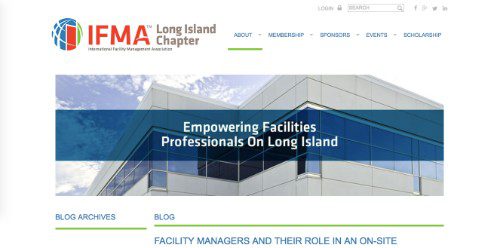
IFMA’s Long Island Chapter penned an article that focuses in on the role of facility managers during on-site emergencies. In it, the organization speaks on a number of key safety topics, including preparation steps, quick decision-making during on-site emergencies, and crisis plan evaluation.
Key Takeaways:
45. What is the Facilities Manager’s Role in Keeping the Workplace Safe?
@iOfficeCorp
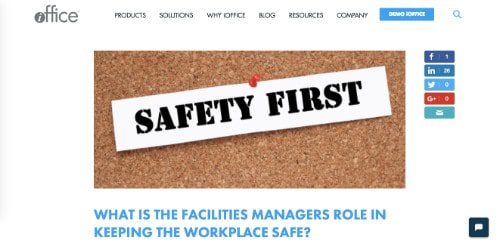
This article, written by Tiffany Bloodworth from iOffice Corp, covers the responsibilities that all facility managers should take both on a daily basis and in the event of an on-site emergency. Bloodworth speaks on high and low-tech ways to achieve this, with everything from system investments to common sense staff security training.
Key Takeaways:
46. Facility Manager Tips: How Can You Actively Promote Workplace Safety
@OfficeSpaceSw
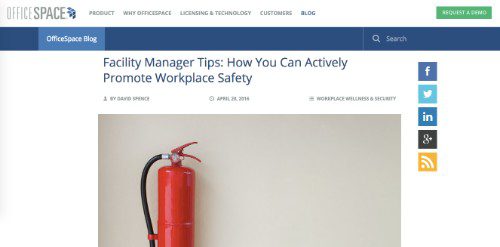
Workplace safety is a topic in which the average employee doesn’t place much interest, but that doesn’t mean that there aren’t ways to spark motivation. In David Spence’s piece for the OfficeSpace Blog, we get valuable insight on how facility managers can keep everyday workers invested in the overall safety and disaster protocol followed by facilities.
Key Takeaways:
47. Facility Management Tips: Emergency and Disaster Drills Assisted by Software
@OfficeSpaceSw
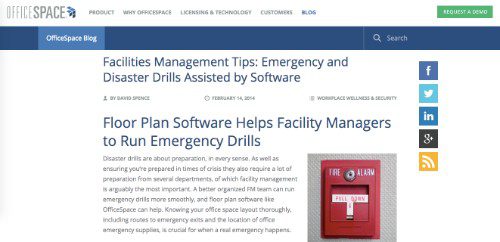
Conducting emergency drills is an integral part of upholding facility safety plans, but ones that are handwritten often contain errors. In David Spence’s piece for the OfficeSpace Blog, we get introduced to floor plan software that is made to optimize and fortify these drills for the safest facilities possible.
Key Takeaways:
48. How to Create an Emergency Plan for Facilities
@REMINetwork
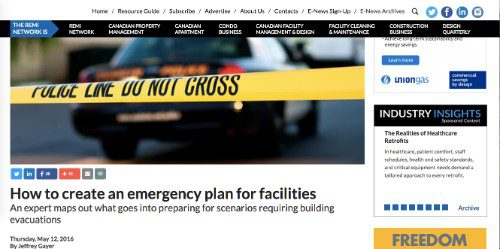
In this article for Canadian Facility Management and Design, Jeffrey Gayer reports on the Canadian Centre for Occupational Health and Safety’s guidelines for creating the most thorough emergency plans for facilities. In it, we get an introduction to facility-specific plans, information that can help you gain an important awareness of the emergency-based ins and outs of your facility.
Key Takeaways:
49. Facility Management Security: Technologies for a Solid Defense
@SoftwareAdvice
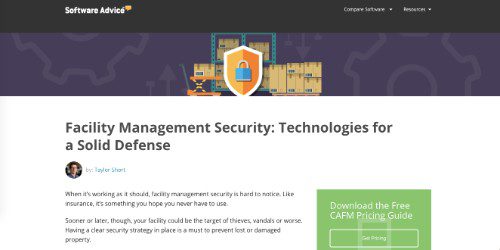
In this enlightening piece written for Software Advice, writer Taylor Short takes a deep dive into the topic of facility security. This is done through a series of interviews, as well as an evaluation of the best emerging software that helps to fortify the plans.
Key Takeaways:
50. Top 11 Safety and Security Tips for Facilities in 2019
@WhosOnLocation
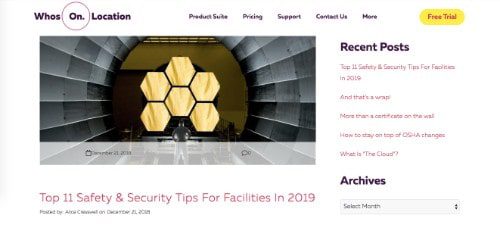
Emergency management firm, Who’s On Location, brings us the Top 11 Safety and Security Tips of 2019, an article that brings to light the trusted tips and emerging technologies that are shaping the world of modern FM.
Key Takeaways:
Our sales engineers are experts in automatic asset tracking, tagging and identification,a nd can answer all your questions. Get in touch now.
Lets Talk ›Enter your information and get a free checklist of the top questions to answer to plan a successful asset tagging project for any maintenance tracking or facility management system.